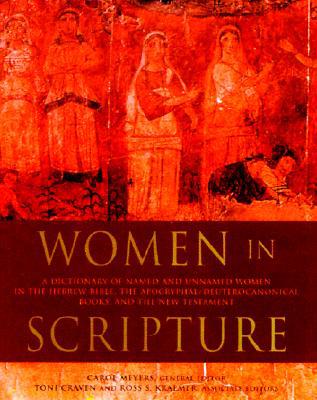

 |

|

The average rating for Women in Scripture based on 2 reviews is 4.5 stars.
Review # 1 was written on 2009-07-17 00:00:00 Luis Sono Luis SonoA superb reference book on women in the bible. Entries are written by scholars and are solidly researched. A good surprise for me - I used it in my church's bible study class. |
Review # 2 was written on 2016-01-14 00:00:00 James Mccafferty James MccaffertyBlack proposes an expansion of the Griesbach or Two-Gospel hypothesis. In framing his position, Black takes patristic testimony about the Gospels seriously. He uses the patristic evidence to develop a plausible back-story that explains how the external and internal evidence favors a Matthew, Luke, Mark order to Gospel composition. According to Black, the following can be concluded from the Fathers: 1. Matthew wrote his Gospel first in a Hebrew style. 2. John wrote his Gospel last. 3. Differences exist about the placement of Luke and Mark. Both are given the second and third places by different authors. 4. Peter stands behind the creation of Mark. He orally delivered in Rome testimonies of what he saw Jesus do and say and Mark faithfully recorded Peter's words. From this evidence Black proposes the following backstory. Matthew wrote his Gospel first for the Jews. Luke then wrote his Gospel as part of Paul's Gentile mission. Because Luke was not an eyewitness, his Gospel needed validation. Peter validated Luke's gospel by speaking in Rome about his eyewitness remembrances regarding the material in Matthew and Luke. Mark records Peter's memoirs. Once Peter validates Luke's Gospel, it may be released. John later writes his gospel. This account is, of course, speculativen—but no more so than Q is speculative. Black also proposes the following internal evidence: 1. "The pericope order and the zigzag phenomenon" This can be accounted for by Peter speaking with both Gospels open before him and moving back and forth between the two as he recounts his memoirs. Black accounts for omissions in Mark by saying that Peter is only recounting what he personally witnessed (thus the birth narratives are dropped). 2. "The extra detail of Mark" The extra detail fits with the scenario of an eyewitness who knows the other Gospels but who adds in vivid details that he recalls. 3. "The minor agreements between Matthew and Luke against Mark" These agreements "are prima facie evidence for literary contact between Matthew and Luke" (42). 4. Markan conflation of Matthew and Luke Black says literary signs of conflation have been documented, though he does not detail them. The strength of Why Four Gospels? is its attempt to account for both patristic and internal evidence is its approach to the Synoptic problem. Its weakness is the dependence Black seems to place on his hypothetical reconstruction. |
CAN'T FIND WHAT YOU'RE LOOKING FOR? CLICK HERE!!!